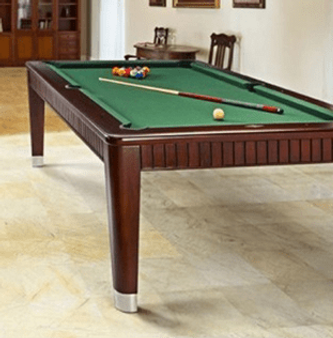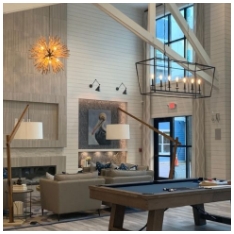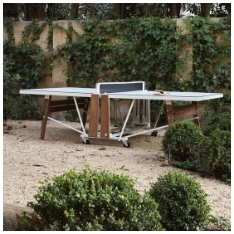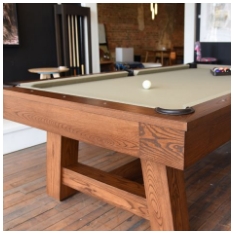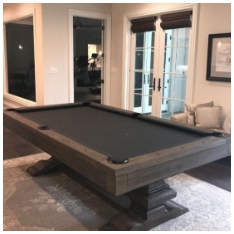Pool tables come in various sizes to fit different environments and playing styles. Whether you're setting up a game room at home or choosing a table for a commercial space, understanding standard pool table dimensions is essential. In this guide, we’ll explain what is the most common pool table size, its advantages, and how it compares to other options.
Standard Pool Table Sizes
Pool tables typically range from 6 feet to 9 feet in length. Here’s a breakdown of common sizes:
- 6-foot table: Often used in compact spaces or by casual players.
- 7-foot table: Sometimes called a “bar-size” table.
- 8-foot table: Known as the most common pool table size for home use.
- 9-foot table: Preferred for professional and tournament play.
Each size serves different purposes, and the right one depends on your available space, skill level, and usage goals.
What Is the Most Common Pool Table Size?
8-Foot Pool Table: The Most Popular Choice
The 8-foot pool table is considered the most common size for residential use. It measures 88 inches in length and 44 inches in width for the playing surface, though the actual outer dimensions are slightly larger due to the rails and cushions.
Why the 8-Foot Table Is So Popular
The 8-foot table strikes a balance between playability and space requirements. It offers:
- A realistic playing experience
- Easier fit in most home game rooms
- Ideal size for both casual and intermediate players
For families and hobbyists who enjoy regular gameplay without the intensity of professional standards, the 8-foot model is ideal.
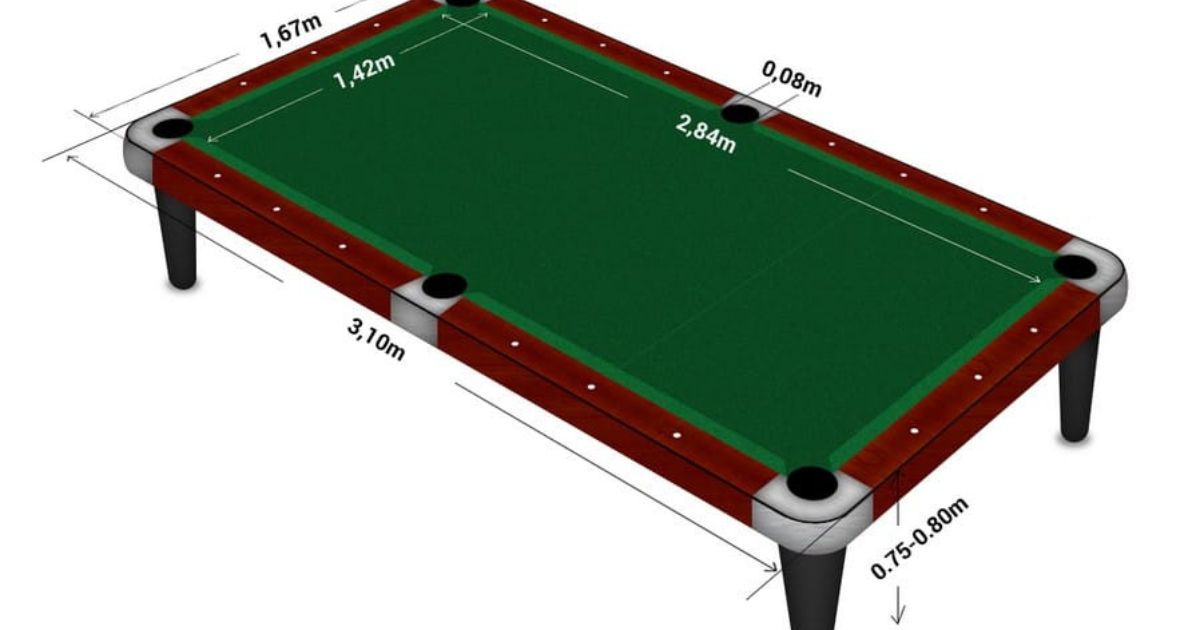
Comparing Pool Table Sizes
Let’s look at how the most common pool table size compares with other dimensions.
7-Foot vs. 8-Foot Pool Tables
7-foot tables, also known as bar-size tables, are 78 inches long by 39 inches wide in playing surface. They are ideal for tighter spaces but offer slightly less precision in gameplay. Balls tend to cluster more, and angles require less precision.
8-foot tables provide more room for strategy and shot placement. Many find this size perfect for honing skills while still fitting comfortably in a home setting.
8-Foot vs. 9-Foot Pool Tables
A 9-foot table has a playing surface of 100 inches by 50 inches. These are used in professional tournaments and provide the highest level of challenge. However, they require a significant amount of space—both for the table itself and for cue movement around it.
While 9-foot tables are excellent for competitive players, they are not practical for most homes unless dedicated space is available.
Space Requirements for Pool Table Sizes
Choosing the right pool table isn’t just about size—it’s also about how much space you need around it for proper gameplay.
Here’s a general guide to room dimensions needed for different pool table sizes (assuming standard 58-inch cues):
|
Table Size |
Playing Surface (L × W) |
Minimum Room Size |
|
6-foot |
72” × 36” |
12' × 15' |
|
7-foot |
78” × 39” |
13' × 16' |
|
8-foot |
88” × 44” |
13.5' × 17' |
|
9-foot |
100” × 50” |
14' × 18' |
These recommendations ensure players can comfortably move and use cues without obstruction.
Factors to Consider When Choosing a Pool Table Size
Room Dimensions
Measure your available space not just for the table, but also for cue clearance. Consider walls, furniture, and other obstructions.
Player Skill Level
Beginners and casual players may prefer 7- or 8-foot tables. Serious or professional players often train on 9-foot tables to improve their accuracy and shot control.
Purpose of Use
- Entertainment or family use? The 8-foot table is best.
- Commercial setting or bars? A 7-foot table saves space and is easy to maintain.
- Training for competitions? Choose a 9-foot table.
Cue Size
Most players use standard 58-inch cues, but shorter cues can help in tighter spaces. This is important if you’re leaning toward a larger table but have limited room.
Other Pool Table Considerations
Table Construction
Pool tables vary in quality. Slate bed tables are superior in terms of durability and gameplay experience, while MDF bed tables are lighter and more affordable.
Cloth Type
The cloth affects ball speed and control. Faster cloths are typically used in professional settings, while slower ones offer better control for casual players.
Pocket Size
Some 7- and 8-foot tables come with larger pockets to accommodate casual play, whereas regulation tables have tighter pockets for a higher level of difficulty.
Pool Table Size and Gameplay
The size of your table influences gameplay significantly:
- Smaller tables tend to be more forgiving and faster-paced, making them great for beginners or social settings.
- Larger tables demand precision and control, making them ideal for improving skill and strategy.
No matter the size, regular play improves accuracy, cue control, and strategy.
Conclusion
Understanding what is the most common pool table size can help you make an informed decision for your home, business, or recreational space. The 8-foot table remains the most popular choice because of its balance between playability and space efficiency. Whether you’re new to the game or refining your skills, the right table size will enhance your experience and suit your environment.
